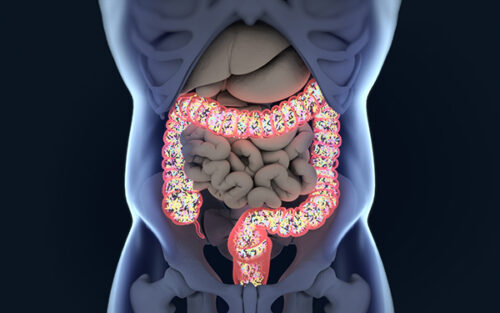Lessons from the Past, Directions for the Future: The WWI Starch Solution for Denmark
By John McDougall, MD
The recent escalation in the severity of temperatures, droughts, storms, and floods has diminished my hopes that the stability and safety that I personally enjoyed during my lifetime will continue into the future for my children and grandchildren. The most immediate threat from this climate change is to our food supply. How can we best adapt to a more difficult world?
Recent history provides many examples of populations of people whose lives have been disrupted by circumstances beyond their control. The best illustrations come from the widespread food shortages that plagued the lives of people living during World War I and II in Western Europe. Some survived these hardships better than others, and here is where valuable lessons for our future can be learned.
One result of the British naval blockade of the North Sea during WWI was that over 400,000 Germans died due to malnutrition from 1914 to 1918. Denmark, which remained neutral during this conflict, was also severely affected by the blockade. But in contrast to the German experience, the Danes thrived. This turn of fortune was due to the brilliance of the physician and nutritionist, Mikkel Hindhede (1862-1945), who served as the manager of the Danish National Laboratory for Nutrition Research in Copenhagen and food advisor to the Danish government during World War I.
Based on his suggestions, the people of Demark switched from a diet plentiful in meat to a diet where the bulk of their calories came from starchy grains and vegetables. Other countries (like Germany) continued to believe in the importance of an abundance of meat for their people and as a result could not adapt to the changing times.
Three Million People become Starch-Eaters
Following Dr. Hindhede’s advice, most of the pigs were sold off and the number of cows for dairy was reduced by one-third. Alcohol production was also limited. These basic changes made available grains for human consumption that would have otherwise been used to feed food-animals and make spirits. His previous work, and that of contemporary scientists, had already proven the nutritional excellence of a diet based on starches, along with fruits and vegetables. At that time, educated people knew that the minimum need for protein was so low for man that it could not be reached; therefore, removing meat would be of no adverse consequence.
In his 1920 article in The Journal of the American Medical Association, Dr. Hindhede wrote, “As research has also shown that man can retain full vigor for a year or longer on a diet of potatoes and fat and for half a year or more on a diet of barley and fat, reliance was placed on our potatoes and the large barley crop, which was given to man and not to the pigs, as heretofore, with the result that the pigs died of starvation, but the people received sufficient nutrition.” “Our principal foods were bran bread, barley porridge, potatoes, greens, milk and some butter. Pork production was very low; hence the farmers ate all the pork they raised, and the people of the cities and towns got little or no pork. Beef was so costly that only the rich could afford to buy it insufficient amount.”
Death Rates Plummet for Starch-fed Danes
What were the results of this change in diet for the 3 million people living in Denmark? During the years of the most severe food restriction, 1917 to 1918, the death rate was reduced by 34%, which translated into 6,300 lives saved. These were the lowest death rates ever reported for Denmark, even for those years prior to the war. Dr. Hindhede tied this reduction in mortality directly to a diet based on consuming starches in place of meat: “This result was not a surprising one to me. Since 1885, when I began my experiments with a low-protein diet (mostly vegetarian), I have been convinced that better physical conditions resulted from this standard of living…As the result of extensive studies in this field I am convinced that over-nutrition, the result of palatable meat dishes, is one of the most common causes of disease.”
Similar reductions of disease and mortality were seen in other Western European countries during both World Wars (WWI and WWII). For example, deaths from diabetes decreased in England and Wales during both wars. However, one important difference was that the people of Denmark were well fed, while much of Western Europe’s population was hungry. Dr. Hindhede wrote, “While not all readers will agree with what I have said, no one can dispute the fact that the people of Denmark have no cause to regret that during the war their diet consisted mostly of milk, vegetables and bran. If Central Europe had adopted a similar diet, I doubt that anyone would have starved.
Lessons for Our Future
I am an optimist, but…the worst drought in the United States in nearly a half-century has occurred over the summer of 2012. Twenty to 40 percent of the crops of soybeans and corn, which feed the pigs, cows, and poultry, have been destroyed; and food prices are rising worldwide. Since, as the saying goes, “you can’t change the weather,” what else can we fix? We can fix our food supply. Rather than feeding the crops to animals, we could instead eat the corn, wheat, soybeans, and potatoes ourselves. The savings would be world-changing.
Converting plant energy into animal energy is wasteful: It takes about 7 pounds of edible, healthy grains to produce just 1 pound of beef, 4 pounds for a pound of pork, and 2 pounds for a pound of chicken. Reallocating land from animal to crop production would increase our food resources at least seventeen-fold: Crops like potatoes can produce 17 times the calories as animals on the same piece of land. There would be additional positive consequences of replacing animal foods in our diet with plants.
The rate of progression of global warming would be slowed. Fossil fuels (the primary source of climate change) used in the production of food would be reduced forty-fold. Consider that about 2 calories of fossil fuel energy are required to cultivate 1 calorie of starchy vegetable food energy; with beef, the ratio can be as high as 80:1. With this same change in eating we would also reduce the needless suffering from the health consequences of our lives of excess, including obesity, heart disease, type 2 diabetes, arthritis, and breast, prostate, and colon cancer, to name a few. We would reduce our national debt by vastly reducing the health care costs associated with these unnecessary illnesses. And we would free a great portion of the world from starvation.
Those who continue to hold to the old ways, believing that meat and dairy are an essential part of a diet, worth preserving at all costs, will perish like the German citizens did in WWI. You choose. Would you rather eat enough potato enchiladas to fully satisfy your appetite or starve with a few strips of bacon? Would you rather help save the planet or contribute to its destruction? We have had this simple knowledge about how to save ourselves for more than a century. Do we have the will to act on it now, before it is too late?
A special thanks to Stefan Juhl M.D., Danish Neurologist, for information on and translation of the work of Dr. Mikkel Hindhede.
Recommended Articles

The Dangers of Aggressively Treating High Blood Pressure

Securing Respectful Medical Care






